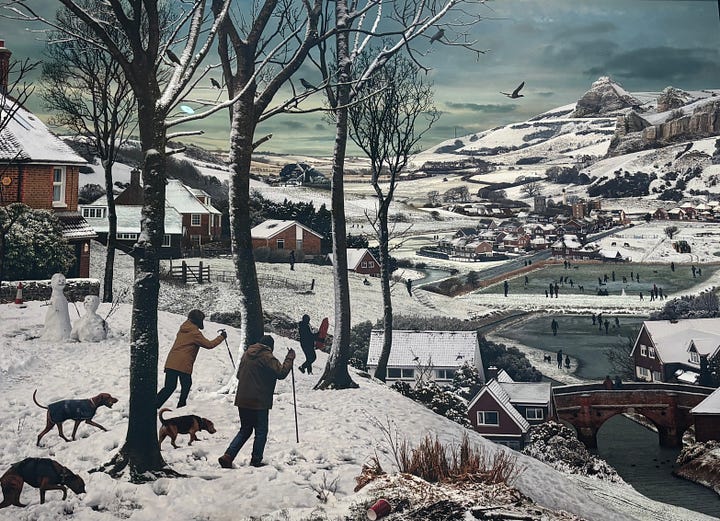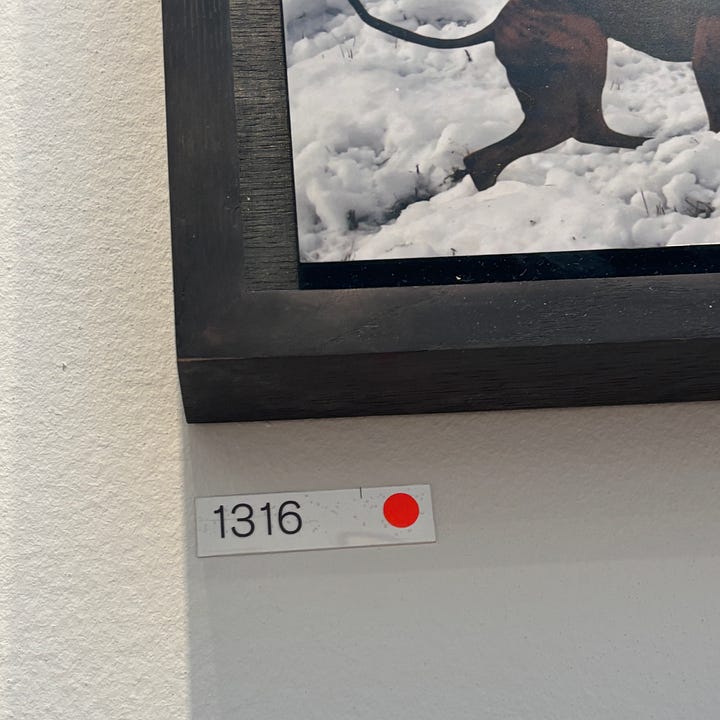It’s been almost exactly a year since I started writing this Substack. I know this because my very first article, which I posted almost 12 months ago (and which was awarded a staggering 9 likes), was a review of the Royal Academy’s Summer Exhibition, 2024.
We’re now one year older, and no wiser. Happy birthday, The Culture Dump.
I was standing in the kitchen with my sister, fast approaching the submission of my thesis, faced with the impossibility of acquiring a job in the near future. If only I’d known this would happen when I started my PhD in History of Art... Go figure.
While incredibly useful for dinner-party conversations and pontificating the relative benefits of Doric versus Ionic columns, Doctorates in the humanities are not hugely in demand for real-world employers. They’re not even really in demand for jobs at universities. Or at museums.
Or anywhere (at least in my woeful job hunting experience).
Anyway, my sister – a social media mogul and successful lifestyle blogger in her own right – had just discovered Substack, and she was loving it. As she massaged butter into oats (I vaguely recall she was making a blackberry crumble), she suggested that I make myself useful by turning my niche and allegedly useless knowledge into a weekly arts newsletter. She is eminently practical. I stole a blackberry, and mulled it over.
I booked a ticket to London and moseyed on down to Burlington House, where I was lucky to find the Summer Exhibition in full swing.
It was colourful, energetic, and a bit mad. Pictures were arranged ‘salon style’ – from floor to ceiling – with punters pushing and shoving each another out of the way to get a better look at the obscure stuff.
Red dots (the stickers which denote that an artwork has been bought and sold) were flying around the room. As you might imagine, the whole experience was exhilarating, and a bit overwhelming, for someone who’d just spent three years locked in an attic writing about William Blake.
And I wonder if the Summer Exhibition in 2024 made such an impression on me because I’d been writing about Blake: an eighteenth-century artist who was constantly submitting paintings to, and having them rejected from, that very same exhibition.
Although Blake studied very briefly at the Royal Academy between 1778 and 1780, he was not a ‘Royal Academician’. The RAs were the tenured artists – painters, sculptors, and architects like Sir Joshua Reynolds, John Flaxman, and Sir William Chambers – whose work was recognised as ‘proper’ fine art.
Paintings by the RAs – which were usually portraits of aristocracy, or grand mythological narratives, or (most successfully) pictures of horses and dogs – would have taken pride of place at the Exhibition. They would have been displayed ‘on the line’, at sight level. If a lesser-known artist like Blake even had a work accepted for exhibition, it would probably have been relegated to the uppermost corner, where less viewers would have seen it.
When I’m walking around the Summer Exhibition, I always wonder what they would have been like when they started in the eighteenth century. I like to think that – with the exception of the addition of new styles and genres, new mediums and techniques – the Summer Exhibition in spirit, isn’t all that different then it was in 1769.
A review of the inaugural show, from The Gentleman’s Magazine in 1769, describes the gallery as being ‘crowded with people of the first fashion’.
This amusing little anecdote tells us just as much about the exhibition — which was popular and crammed, as it continues to be — as it does about the people who attended it. The audience were ‘of the first fashion’: that is, fashionable, arty, maybe just a little pretentious.
That’s all still, I think, exactly the same.
It’s the longest continually running annual exhibition of contemporary art in the world. The one showing currently is the 257th Summer Exhibition in a row. The whole concept is to showcase the best of the contemporary art scene. While Royal Academicians do tend to get the best wall space, the gallery is in fact open to public submissions, and plenty of non-members make it in each year.
When the RA was founded, the aim was to create a space where, in their words, ‘all Artists of distinguished merit’ could exhibit. You didn’t have to be a full-blown Academician to submit, and over time, Associates, students, and complete unknowns have all had a shot at showing (and selling) their work in the galleries.
So, here we are, in 2025. We’ve got almost 2000 new artworks in and around Burlington House to think about. This year’s show is clever and expansive, and less hectic than the bunfight of 2024. The works on display are thoughtful, and broadly focused on figures in and around landscapes. This ties into the wider theme of the Exhibition, which is ‘Dialogues’: dialogues between man and nature, between political factions, cultures, and even between disciplines.
The standouts for me were the Six Seasons of Emily Allchurch. These were prints which brought the contemporary world into the landscapes of Old Master paintings (Bruegel), eliciting a dialogue between the present and the past.


I’ve never submitted anything to the Summer Exhibition, but I can certainly empathise with the amateur artists who show their works there.
There’s something about the democratic outlook of the exhibitions – the way anyone can submit their work, and the way the submissions have to chaotically jostle for attention and patronage – that smacks of Substack.
I’m so grateful to be able to exhibit my work here, even if Substack hasn’t been going as quite as long as the RA. Though my comparison begs the question — is Substack ‘crowded with people of the first fashion’?
I wonder if I’ll have anything new to say about the Summer Exhibition in 2026.
Thanks for reading.
Check out my Instagram at @culture_dumper and my TikTok @theculturedump, where I post daily updates on my academic work, life, and current exhibitions.












Immediately googled Emily Allchurch because that Breugel project sounds fascinating. Congrats on one year, Rebecca!
I went to the Summer Exhibition in 2023 and 2024, but missed this year. So sad. But you've brought it alive for me, Rebecca, thank you!
And many congratulations on your Substack anniversary.